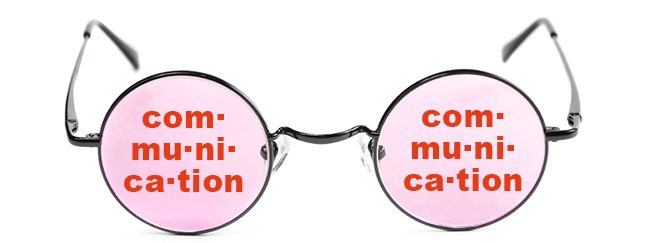
Communication has changed a lot over the years; we now have smartphones that can do just about everything except brush our teeth. Our inbox replaces our mailbox in many cases so that we can funnel communications through our preferred channel—and our text message and push notifications serve to remind us when we forget to dig out our paperless communications from the piled higher and deeper aforementioned inbox. Today’s world of communication is something my Grandmother would not appreciate—a woman fond of writing letters and postcards and posting them in the mail.
In Customer Communications Management (CCM) we have come a long way for large producers of print, mail and electronic communications. It is easier than ever for companies to manage the flow of communications from creation to delivery and the responses that come back from the customer base. But as I mentioned before, that doesn’t mean that communications are optimized or relevant to the end recipient. In fact, the more email I get in my inbox, the more I wonder if I am missing important communications. It makes the mail stack I still get look positively delightful. It also represents a shift in the way the communications creators are seeking to reach their intended recipients; whether these recipients are B2B or end-consumers.
What is this shift? The need to optimize and intelligently enhance the communication to recipients for a more positive and valued experience. If you think about it, people just want that personalized—and in-touch—service that our grandparents once had. When the world moved slower and communities were places people spent a lifetime, it wasn’t unusual to get a personalized letter or greeting card from your local business. Generally, the food store, department store and gas station workers would know what you bought and the types of things you were looking for. They would make it worth your while to come back to their store. Now, with the sheer speed and reach of communications, we have tried to mimic this with basic data personalization (e.g., Dear Jonathan,), but the result is a somewhat cold and predictable feeling that they business knows your name but hardly anything else.
What is the vision of a perfect communication world? This would be a world where the communications that come to us are more relevant and through an omnichannel experience. Imagine that you still get important high-value communications in print delivered through your mailbox, but then along with it you get a text message or app notification to let you know it is on its way. Perhaps if you don’t respond to the message’s call to action in a certain amount of time it would send you an email to make sure you received your communication with a digital copy attached or a link to where it resides in a secure portal.
Your printed letter might have a personalized URL (pURL) that would take you to a live interactive version of your communication with personalized video embedded in it to help you understand the ins and outs of the communication. Or if you log into your app, perhaps you get a personalized video that tells you about the mail you will receive soon and why it is important for you to read and understand it.
Communication as I envision it in a perfect world is more than just massive amounts of regular and ad hoc communications coming into your inbox, mailbox, smartphone etc., but a communication experiences where the communications are less in one or two channels and balanced across a multitude of channels based on the importance and preference of the recipient. For example, I actually like getting my Macy’s discount promotions through text message. Largely invasive and should I see something in the catalog that came in the mail, I might choose to pop onto the app or instore and purchase. However, the problem is the mail catalog and the texts hardly come synchronized. This organized, synchronized, relevant and data-driven vision of communication that leverages print and digital is like the communication nirvana. And if someone tries to tell you they have achieved this today, they are likely as rare as the Hope diamond.
Have no fear though, as communicators, software providers, designers and print and mailers, there are cool options that have shown signs of coming together. Video is playing a large part of stitching the traditional communication channels together with digital while driving customer engagement. Customer Engagement, the name of the game as we look ahead to the future. So as you communicate and design your program, think about what you would want to experience and look for those solutions out in the market that will help you achieve it. As communicators, we can drive better and ultimately more balanced communications
Jonathan Malone-McGrew grew up around printing, software and cars. As an accredited Electronic Document Professional (EDP) through Xplor International, Jonathan has worked within the industry for nearly a decade providing direction and expertise in Marketing customer communications for transactional, commercial and specialty print, as well as, multichannel delivery through the latest technology vehicles. Jonathan currently works with Pitney Bowes in their Customer Engagement Solutions group. You can find him via @JEMcgrew on Twitter and giving advice and opinions as part of the McGrewGroup of companies.
grew up around printing, software and cars. As an accredited Electronic Document Professional (EDP) through Xplor International, Jonathan has worked within the industry for nearly a decade providing direction and expertise in Marketing customer communications for transactional, commercial and specialty print, as well as, multichannel delivery through the latest technology vehicles. Jonathan currently works with Pitney Bowes in their Customer Engagement Solutions group. You can find him via @JEMcgrew on Twitter and giving advice and opinions as part of the McGrewGroup of companies.











